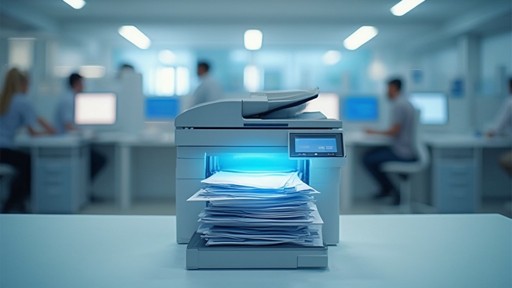Introduction
At the intersection of artificial intelligence (AI) and document handling lies Intelligent Character Recognition (ICR)—a technology that elevates the capabilities of Optical Character Recognition (OCR) by integrating AI to effectively decipher handwritten and printed text. While OCR is adept at translating machine-printed text to digital format, ICR distinguishes itself by also tackling the complexities of human penmanship. This advancement is not just a step forward in document processing; it mirrors the trajectory of AI itself, which is increasingly becoming a staple in sectors such as retail, healthcare, and finance, making interactions with machines seamlessly human-like.
ICR’s proficiency stems from its ability to not only capture textual content but to understand its context, much like Natural Language Processing (NLP) allows for nuanced communication between humans and AI systems. The technology’s application is vast, from streamlining data entry processes to enhancing accessibility for those with visual impairments. As companies like Intel and Red Hat innovate to simplify machine learning tasks, ICR stands out as a crucial tool that adapts and learns, bringing intelligent automation to the forefront of operational efficiency.
What is Intelligent Character Recognition (ICR)?
At the junction of artificial intelligence (AI) and paper management lies Intelligent Character Recognition (ICR)âa discipline that enhances the capabilities of Optical Character Recognition (OCR) by integrating AI to effectively interpret handwritten and printed text. While OCR is adept at translating machine-printed text to digital format, ICR distinguishes itself by also tackling the complexities of human penmanship. This progress is not simply a leap forward in processing; it reflects the path of AI itself, which is progressively becoming a cornerstone in sectors such as retail, healthcare, and finance, making interactions with machines effortlessly human-like.
ICR’s proficiency stems from its ability to not only capture textual content but to understand its context, much like Natural Language Processing (NLP) allows for nuanced communication between humans and AI systems. The application of this innovation is vast, from streamlining data entry processes to enhancing accessibility for those with visual impairments. As companies like Intel and Red Hat innovate to simplify machine learning tasks, ICR stands out as a crucial tool that adapts and learns, bringing intelligent automation to the forefront of operational efficiency.
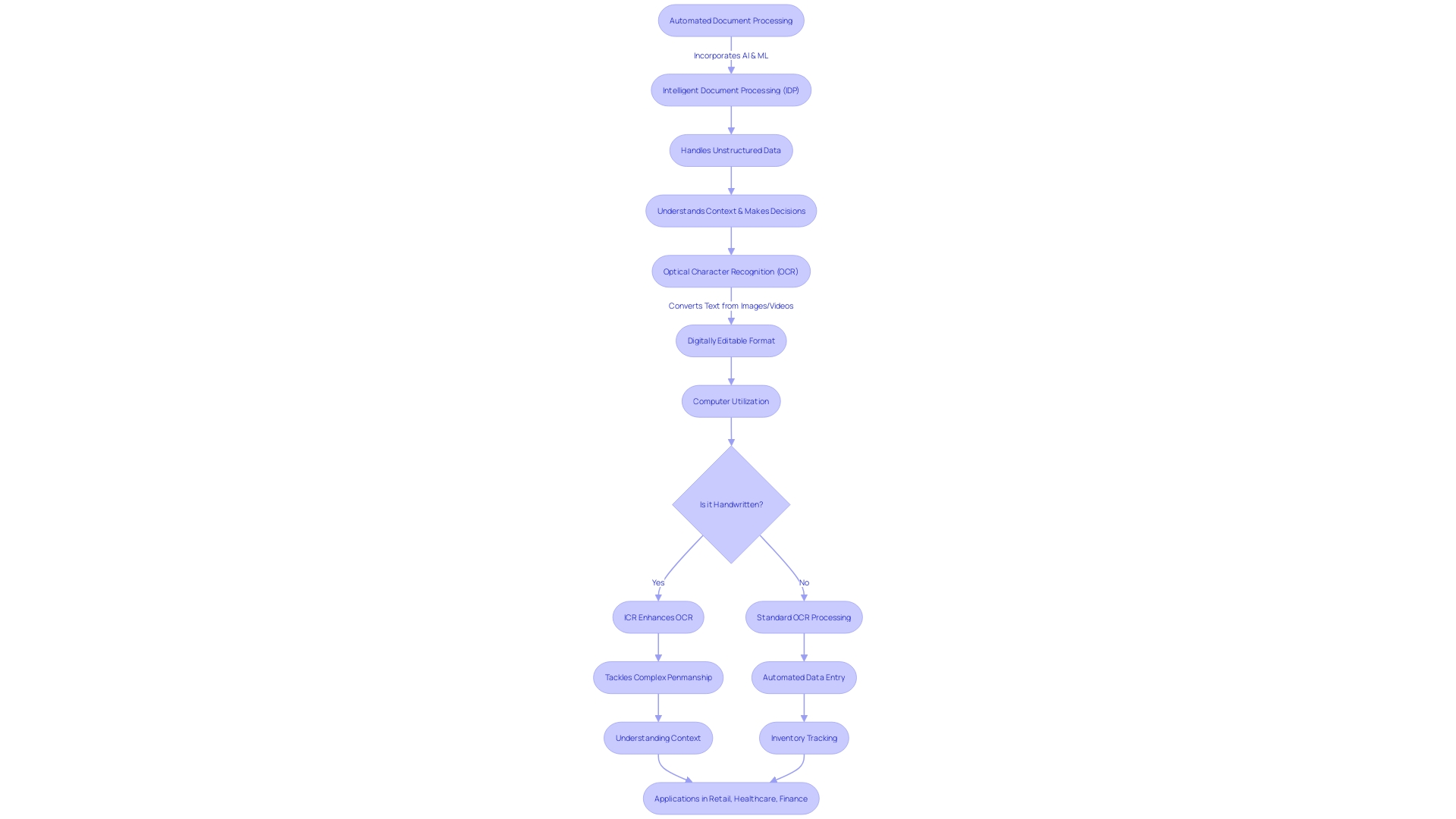
How Does ICR Work?
Intelligent Character Recognition (ICR) plays a fundamental role in the field of managing and processing documents, utilizing the capabilities of AI to extract valuable data from different types of files. The ICR process is initiated with pre-processing, where files are prepared for analysis. This includes ensuring that the text is clear and readable for subsequent stages. After this, AI-powered information extraction occurs, where technologies like Optical Character Recognition (OCR) and Natural Language Processing (NLP) collaborate to precisely recognize and extract pertinent information points from the records, like names, dates, and addresses.
Post-processing is the last stage, which involves additional improvement of the extracted information. This can involve the categorization of files into specific groups, editing, and the visualization of findings. The use of a microservices architecture in this process ensures scalability and resilience, making it an apt choice for handling large volumes of data efficiently. A practical application of these advanced techniques can be seen in the German patent office, where they facilitate the processing of patent submissions with increased precision and speed.
By incorporating AI and ML into processing files, industries like banking, healthcare, and insurance can attain greater operational efficiency, reduce errors, and simplify intricate workflows. Not only does this modernize their operations, but it also significantly reduces the expenses associated with manual paperwork. As the field continues to advance, these intelligent processing solutions are becoming essential tools for businesses looking to excel in a data-driven landscape.
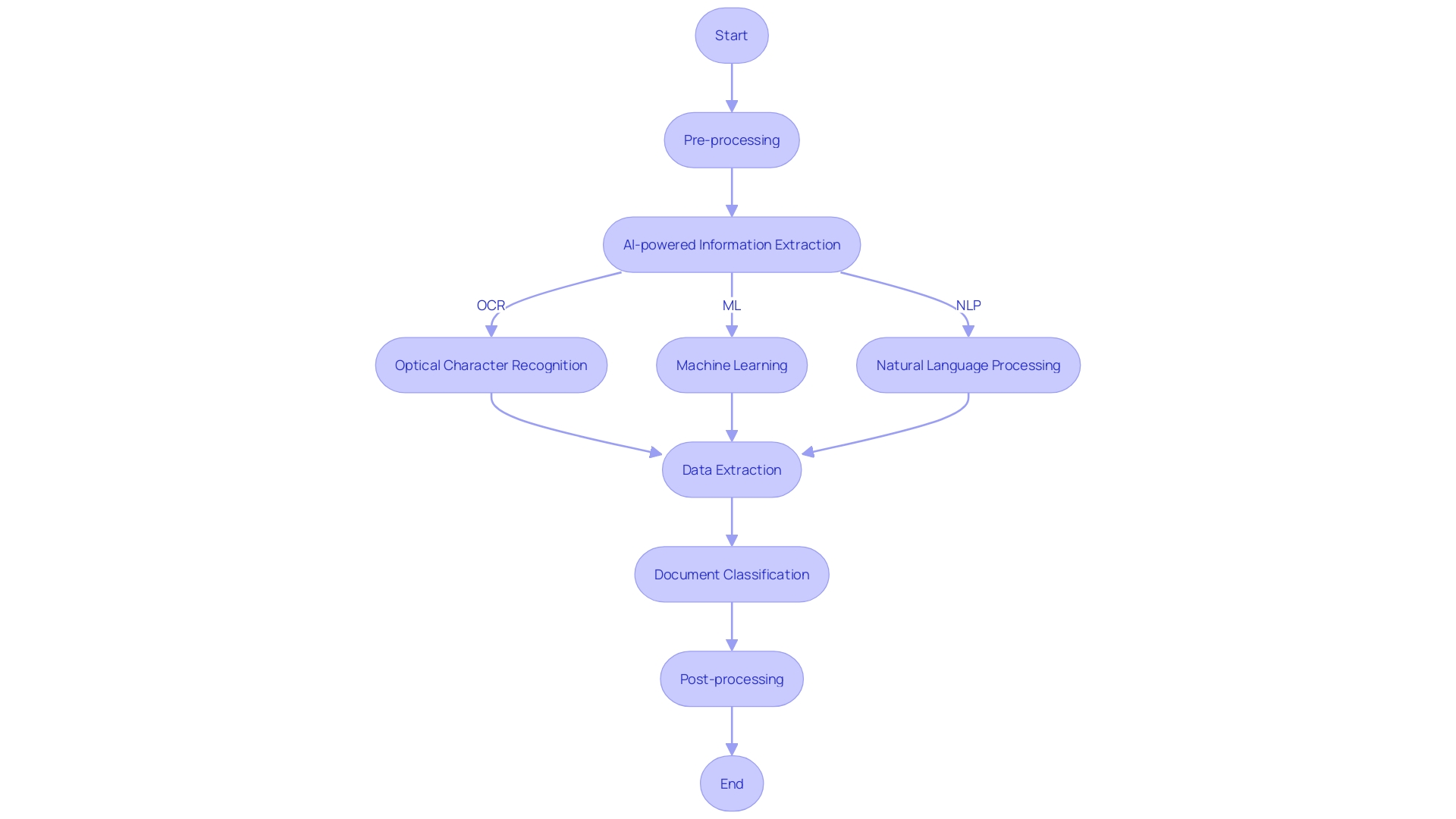
Pre-processing: Enhancing Image Quality
Intelligent Character Recognition (ICR) systems start by enhancing images through sophisticated pre-processing techniques. These systems utilize cutting-edge Convolutional Neural Networks (CNNs) and encoder-decoder network architectures to refine image quality, which is crucial for the recognition process. Such enhancements include optimizing image resolution and adjusting brightness and contrast to counteract non-ideal visibility conditions. Noise reduction and realignment are also conducted to guarantee the precision of information extraction, particularly in skewed or distorted records. Reflecting the complexity of real-world environments, these pre-processing steps are akin to how autonomous vehicles use augmented datasets for nighttime recognition – by brightening images to improve the neural network’s performance. This focus on pre-processing aligns with recent research emphasizing the impact of image enhancement algorithms on the inference capabilities of CNNs. By strategically enhancing image quality, ICR systems are focused on creating an optimal input for information extraction, thereby improving overall operational efficiency.
AI Data Extraction: Converting Unstructured to Structured Data
Utilizing the capabilities of AI algorithms, Intelligent Character Recognition (ICR) transforms the challenging task of analyzing image files and extracting crucial data into a streamlined process. This advanced technology adeptly converts the labyrinth of unstructured information, such as the intricacies of handwritten notes or the fixed form of printed text, into a digital structure that computers can effortlessly process and analyze. The power of ICR shines when faced with documents like scanned PDFs, which traditionally lock away their text as if it were etched in stone. In industries where information is the lifebloodâfinance, legal, healthcareâICR stands as a beacon of efficiency, bypassing the limitations of manual information entry and rudimentary extraction tools.
Imagine receiving a collection of important information in the form of PDFs, only to discover the daunting reality that many are scanned images. In the past, extracting usable information from such documents was akin to navigating a minefield, fraught with the risk of errors and inefficiencies. However, ICR has revolutionized this process by applying its sophisticated logic, which may include parsing document-specific layouts or employing OCR services like AWS Textract. It harnesses natural language processing (NLP) techniques to seek out key-value pairs or to identify relevant information spatially near certain keywords.
Structured information, the type found in banking transactions or airline reservations, easily fits into traditional databases due to its uniform format. Unstructured text, however, has always presented a challenge—until the advent of ICR and AI-driven tools. These technological marvels, when fed with substantial and representative information, become increasingly effective, unlocking the full potential of AI in accessing and training on all relevant unstructured data. Extracting structured information from the vast expanse of unstructured content is no longer the Herculean task it once was, thanks to the ongoing evolution of methods ranging from Regular Expressions (Regex) to sophisticated NLP techniques like Named Entity Recognition (NER) and Topic Modeling via Latent Dirichlet Allocation (LDA).
The significant effect of ICR is apparent in different data-rich sectors, guaranteeing that professionals can promptly retrieve and make use of the valuable information within their files. With ICR, the once-stubborn PDF becomes a conduit for seamless information integration, propelling industries forward with newfound operational efficiency.
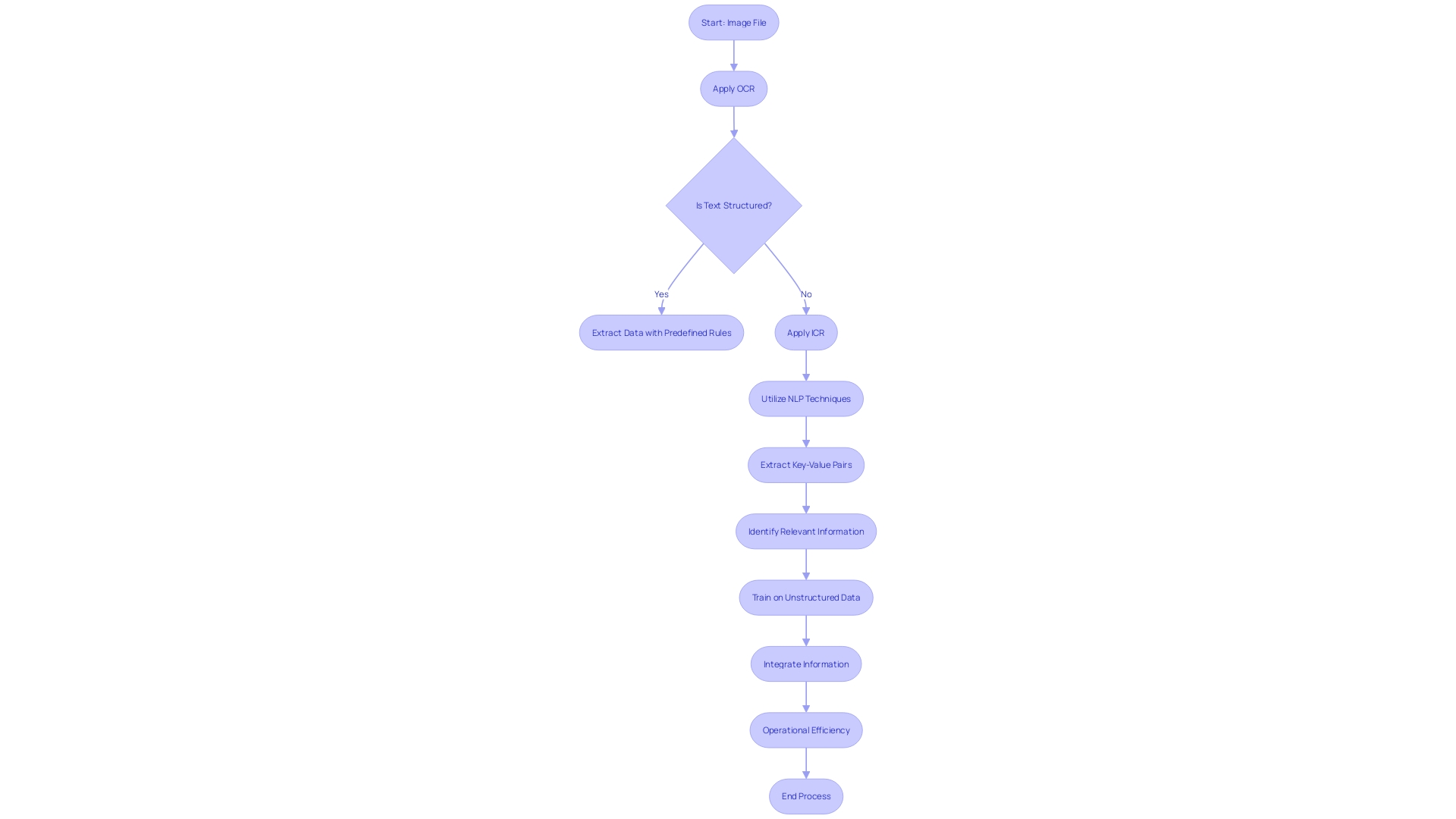
Post-processing: Correcting Mistakes and Improving Accuracy
Intelligent Document Recognition (IDR) systems are constantly evolving to increase accuracy and efficiency in text recognition. After the initial information extraction from documents, these systems utilize advanced post-processing methods to refine the output. One such method is the contextual analysis, which reviews the text within the context it appears, much like the work conducted at Lawrence Berkeley National Laboratory, where researchers handle complex scientific information and require precise information extraction for their groundbreaking work.
Post-processing stages may include spell-checking and grammar correction to refine the text. These stages are crucial, as even state-of-the-art Optical Character Recognition (OCR) technology can produce errors due to various factors, such as poor file quality or complex page layouts.
Dr. Amani Arthur, a trailblazer in medical imaging AI, highlights the significance of precise information extraction in diagnosing and treating uncommon illnesses. Likewise, in record administration, accuracy is crucial to avoid false information and guarantee information integrity.
Recent advancements in AI have brought about significant improvements in OCR accuracy. Significantly, deep learning approaches have been utilized to improve recognition processes, resulting in more dependable extraction of text from historical records and scientific literature.
While the industry boasts low error rates, aligning with human-level transcription capabilities, feedback from communities reliant on accurate text recognition, such as the DHH community, suggests a need for further refinement. This gap between innovation and user experience underlines the ongoing requirement for improvements in post-processing techniques to achieve the high-quality output necessary for various applications.
Machine Learning Algorithms in ICR
Utilizing the power of Intelligent Character Recognition (ICR), we have entered a time where machine learning algorithms play a crucial role in converting handwritten notes and various file types into actionable data. These advanced algorithms are not just about recognizing text; they’re about learning from extensive datasets, which enables the system to adapt and improve over time. With each new script, language, and document type, the system evolves, enhancing its capability to interpret even the most intricate handwriting styles.
Through case studies like the one from ICL, we observe the practical application of such advancements in industrial settings. Workers at ICL’s mining sites, who once relied on continuous manual monitoring under challenging conditions, now benefit from AI-driven tools that offer a more scalable and cost-efficient monitoring solution. In academia, researchers are utilizing machine learning to delve into complex mathematical constructs, as demonstrated by groundbreaking work published in Nature Communications.
The rapid growth of AI research, as reported by Nature Machine Intelligence, signifies the relentless pace of development in fields like ICR. The implementation principles of OCR and ICR, which include preprocessing images for improved text recognizability, lay the foundation for these advancements. This preprocessing is crucial as it involves cleaning up images to ensure that the text is clear and free from distortions, thus ready for analysis.
Moreover, the rise of machine learning and its integration into document management isn’t just a technical feat; it reflects a broader trend in artificial intelligence adoption. Data shows that although certain AI advancements are still in their initial stages of implementation, devices such as wearable fitness trackers and intelligent temperature controls are experiencing growing utilization, indicating a transition towards greater incorporation of AI in daily routines.
The journey from traditional OCR to ICR is marked by continuous improvement and optimization strategies that cater to different fonts and writing styles. This evolution is essential in today’s digital transformation era, where efficient data extraction and analysis are paramount. As a testament to this advancement, organizations like MLCommons play a vital role by providing the research community with the infrastructure needed to achieve new breakthroughs in AI.

Applications of ICR Across Various Industries
Intelligent Character Recognition (ICR) technology is transforming operations across a broad spectrum of industries. In the banking and finance sector, ICR is crucial in enhancing the accuracy and speed of check processing and form automation, significantly reducing manual entry and improving customer service. Within healthcare, patient records are digitized with greater precision, contributing to better patient care and streamlined administrative workflows. In logistics, ICR plays a crucial role in the efficient management of shipping documents, which is essential for the timely delivery of goods. Moreover, government agencies are utilizing ICR to automate entry processes, thereby enhancing productivity and decreasing backlogs.
A compelling example of ICR’s impact is found in the narrative of Nets, a pioneer in digital payment solutions. Their challenge of presenting technical information in a user-friendly manner reflects the transformative power of ICR in converting complex information into accessible and engaging formats, facilitating better onboarding experiences and compliance with stringent financial regulations.
The convergence of ICR with blockchain, as showcased by initiatives like those by DFINITY and Roland Berger, further underscores its potential for transparency and accountability. With blockchain, every step of the recycling process can be tracked, showcasing how ICR can underpin environmentally sustainable practices while engaging consumers with real-time insights.
Within industrial settings, the integration of ICR with Information and Communications Technology (ICT) and Industrial IoT applications is revolutionizing traditional practices. It enables real-time monitoring, fosters informed decision-making, and enhances cross-domain collaboration—pillars of the Industry 4.0 revolution. This synergy is not without challenges, with information security and privacy at the forefront, yet the promising benefits are driving adoption forward.
As businesses explore the capabilities of AI, including ICR, we recognize the transformative effects on operational efficiency. Statistics Canada’s survey on AI usage by Canadian businesses highlights a growing trend in leveraging AI for goods production and service delivery. This information highlights the far-reaching consequences of AI innovations such as ICT in transforming industry landscapes.
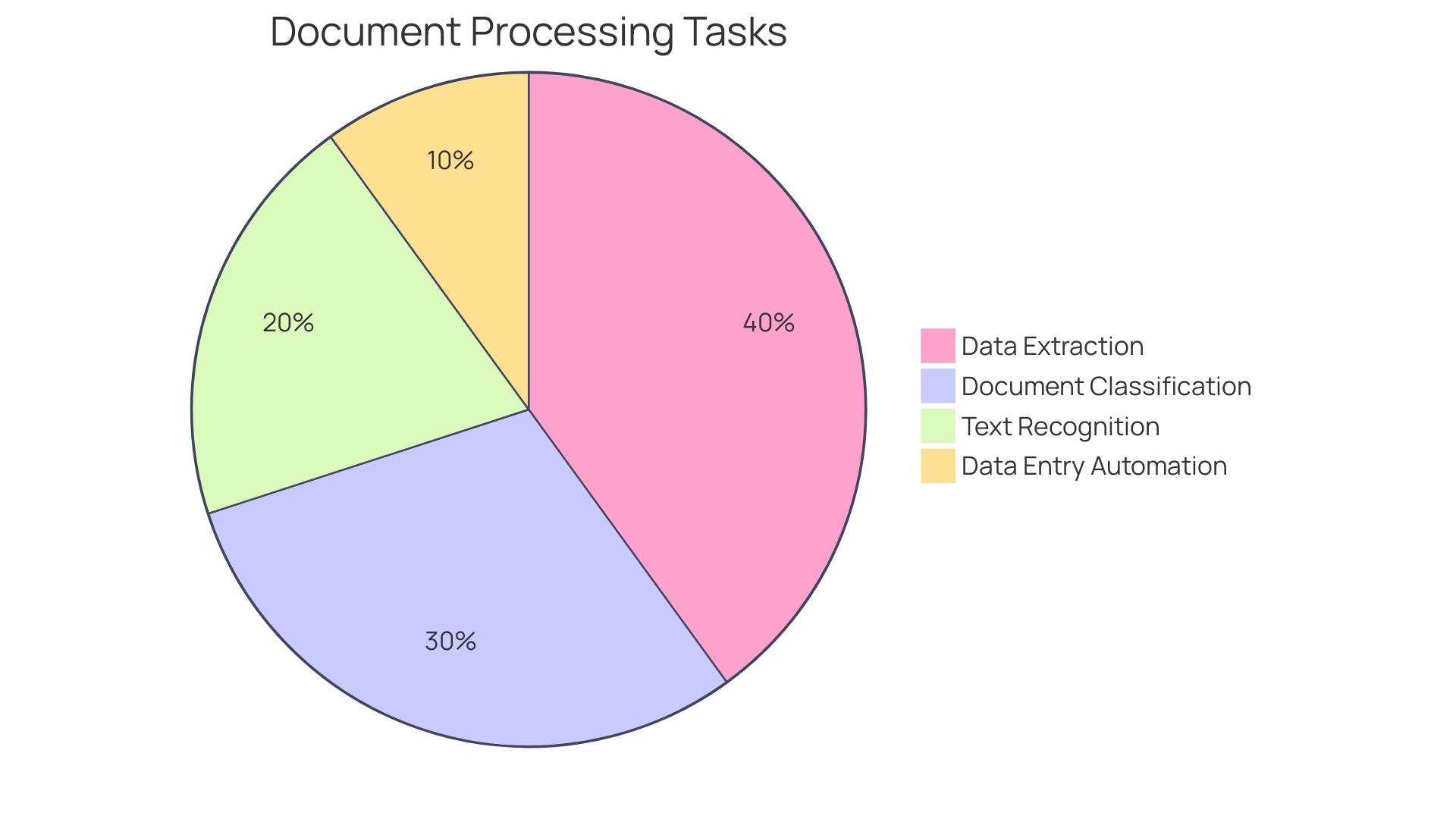
Benefits of Using ICR: Enhanced Accuracy, Time-Saving, and Cost Efficiency
Utilizing Intelligent Character Recognition (ICR) has become a game-changer for organizations aiming for greater operational efficiency. This advanced form of optical character recognition (OCR) uses artificial intelligence (AI) to convert handwritten text into machine-encoded text with remarkable accuracy. By implementing ICR solutions, companies can greatly reduce the inaccuracies linked to manual entry.
An insightful illustration of ICR’s transformative power is evident at ICL, a global manufacturing and mining corporation. ICL faced challenges in monitoring their industrial equipment under harsh conditions that made sensor attachment unfeasible. The traditional method of manual monitoring was not only cost-intensive but also inefficient at scale. ICR presented a groundbreaking solution, facilitating the extraction and analysis of information from visual inputs, such as camera images, which significantly improved the monitoring process. This led to more timely interventions, preventing machinery overloads and minimizing mineral loss due to screener overflow, thereby optimizing resource utilization.
Moreover, ICR streamlines data extraction processes, making them swifter and more reliable. The automation of these processes not only saves significant time but also allows employees to focus on more strategic tasks that require human expertise.
Adopting ICR solutions has a direct impact on an organization’s bottom line. By enhancing workflow efficiency, reducing operational expenses, and boosting productivity, companies can achieve a substantial return on investment. As we observe the widespread adoption of AI in different sectors, it is evident that advancements like ICR are crucial for the future of sustainable and efficient operations, as stated by industry leaders such as Paul Mikesell, CEO of Carbon Robotics. His company’s application of AI in agriculture demonstrates the potential of intelligent technology to not just enhance business outcomes but also contribute to environmental sustainability.
In summary, incorporating ICR solutions provides businesses a competitive advantage, allowing them to navigate the intricacies of information management with ease and accuracy, ultimately promoting a more efficient and sustainable operational setting.
Choosing the Right ICR Solution for Your Business
Choosing the best Intelligent Character Recognition (ICR) solution is a crucial choice that can greatly enhance your business’s handling and processing capabilities. Look for systems that boast high accuracy rates to minimize errors in data capture, ensuring that important details aren’t overlooked or incorrectly recorded. Scalability is another crucial aspect; your selected ICR should easily expand with your business, managing growing volumes of records without performance degradation.
Compatibility with existing systems ensures a seamless integration, preventing disruptions in your current workflow. This integration is pivotal for operations where conditions may not be conducive to traditional monitoring, as exemplified by ICL’s mining equipment in harsh environments. Their shift to more automated monitoring underscores the need for adaptable solutions that can work under varied conditions.
Moreover, the ease of integration speaks to the solution’s ability to blend with your tech stack. Organizations like IFCO have benefited from partnering with vendors like Rackspace, who provide tailor-made support, highlighting the importance of vendor expertise and customer-focused service in implementing complex ICR solutions.
Dominic Williams of the Internet Computer emphasizes the transformative role of enterprise-level solutions, which aligns with the need for robust, enterprise-ready ICR platforms capable of handling complex processing tasks with agility and precision. With the ongoing increase in the amount of business paperwork, the need for smart processing solutions that can automate and optimize workflows is more important than ever.
The correct ICR solution will not only meet present requirements but also position your organization to utilize the complete potential of AI-driven record management, resulting in improved operational effectiveness and a competitive advantage in the digital environment.
Implementing ICR in Your Workflow: Best Practices
Intelligent Character Recognition (ICR) technology has advanced significantly, providing improved capabilities for processing files. But to leverage these advancements, one must adopt a strategic approach. Begin by conducting a comprehensive analysis of your processing requirements to identify specific areas that ICR can optimize. Seamless integration with existing systems is crucial to avoid silos and ensure that the ICR solution complements your operational ecosystem.
Training is vital for users to fully utilize the ICR capabilities, reducing the risk of errors and enhancing productivity. It’s not enough to deploy the system and walk away; regular monitoring and performance evaluations are necessary to identify and rectify any issues promptly. This proactive approach ensures that the ICR solution maintains high accuracy levels and adapts to changing requirements.
Feedback loops are essential for continuous improvement. In the realm of bioinformatics, for instance, a significant percentage of resources remain unused post-publication due to factors such as insufficient documentation and lack of updates. By learning from such scenarios, it’s clear that for ICR solutions to be sustainable and efficient, they must evolve with ongoing maintenance and updates driven by user feedback and technological advancements.
In summary, to maximize the potential of ICR within your workflow, it’s imperative to analyze needs, integrate seamlessly, train thoroughly, monitor regularly, and update continuously. These top recommendations will guarantee that your ICR system is not just efficient but also stays a valuable asset in the ever-changing field of management and processing.
Future Trends in ICR: Integration with AI and Automation
The scope of Intelligent Character Recognition (ICR) is expanding, driven by advancements in AI and automation. The synergy between ICR and AI advances such as Natural Language Processing (NLP) and Machine Vision is poised to significantly boost the precision and range of capabilities of ICR systems. The combination of ICR with Robotic Process Automation (RPA) ushers in a new era of end-to-end automated workflows for file management and processing.
Healthcare, for instance, has seen transformative effects due to cloud-based OCR automating the digitization of patient records, reducing time and minimizing errors. Intelligent Document Processing (IDP) has emerged as a revolutionary solution to manage the burgeoning volume of documents more swiftly, economically, and accurately by leveraging AI and ML.
This innovative landscape is characterized by a taxonomy of systems, distinguishing between traditional automation and intelligent automation, the latter being divided into AI-augmented, autonomous, autonomic, and cognitive systems. These categories signify varying degrees of how AI integrates with human tasks and the environment. Recognizing the continuous development of intelligent automation, it is crucial to understand that the distinctions among these classifications may become less clear, indicating the ever-changing essence of these innovations.
The market for AI, inclusive of software, hardware, and services facilitating AI applications, is witnessing a surge. With AI restructuring the core system of record and workflows, no incumbent can feel secure. As one industry expert noted, we’re entering an era where software will proactively assist humans and even suggest subsequent actions.
In light of these developments, it’s essential for businesses to stay abreast of AI statistics, trends, and forecasts to maintain a competitive edge and innovate. The AI market, expected to reach USD 20 billion by 2025, underscores the need for firms to adopt these transformative technologies to enhance their operations.
Conclusion
ICR technology revolutionizes document handling by deciphering handwritten and printed text with AI integration. It enhances operational efficiency and streamlines workflows in various industries. ICR’s ability to capture and understand content reflects the trajectory of AI, making interactions with machines seamlessly human-like.
With its foundational role in document management, ICR utilizes AI and ML to achieve higher efficiency, reduce errors, and streamline workflows. Pre-processing optimizes image quality, ensuring accurate data extraction. ICR transforms unstructured information into a digital structure, unlocking the potential of AI in accessing and training on relevant data.
Post-processing methods refine output accuracy, while machine learning algorithms adapt to different handwriting styles. ICR’s impact spans industries, automating processes, reducing manual data entry, and driving transparency and efficiency.
Adopting ICR solutions enhances accuracy, saves time, and improves cost efficiency. It offers a competitive edge by navigating data management complexities. Selecting the right solution, considering accuracy, scalability, and compatibility, is crucial.
Best practices include thorough analysis, seamless integration, training, monitoring, and continuous updates.
The future of ICR lies in AI and automation integration. Fusion with NLP, Machine Vision, and RPA enables end-to-end automated workflows. Intelligent Document Processing revolutionizes management, while a taxonomy of systems distinguishes traditional from intelligent automation.
Staying updated on AI trends is essential for a competitive edge.
In conclusion, ICR’s integration with AI enhances operational efficiency. Its impact spans industries, automating processes, reducing errors, and improving cost efficiency. Adopting ICR offers a competitive edge, and best practices ensure successful implementation.
The future lies in AI and automation integration, revolutionizing document management.
Experience the transformative power of ICR technology and streamline your workflows today!

